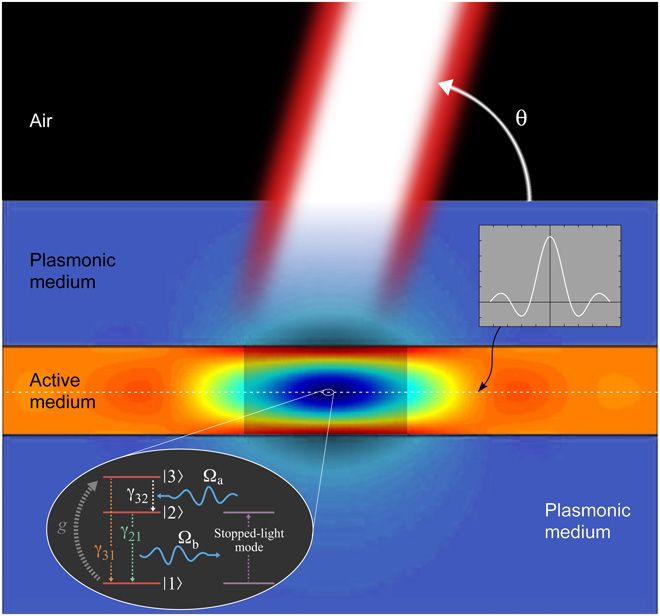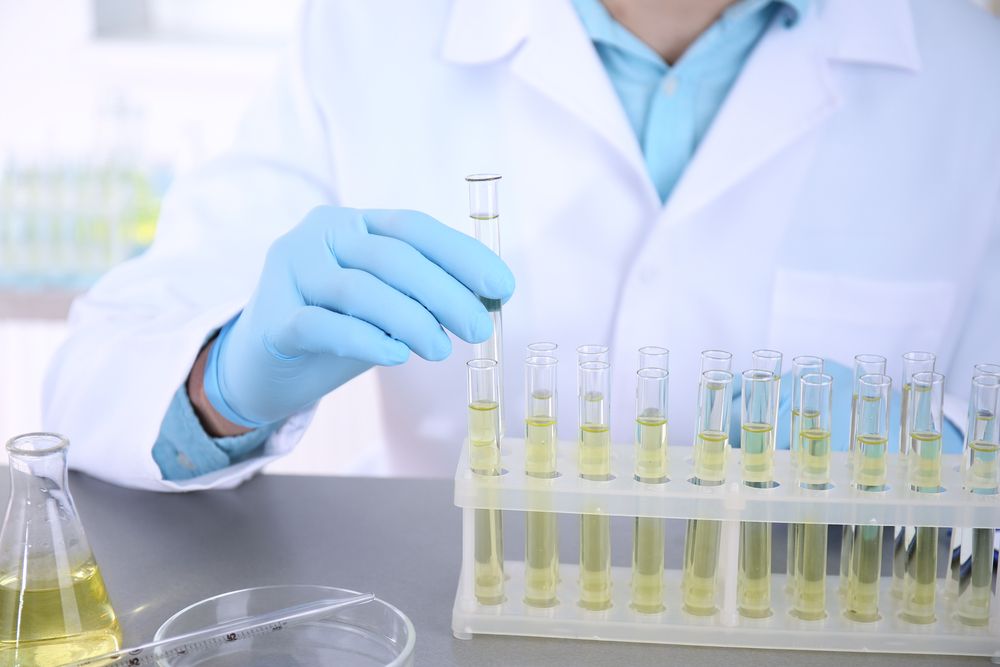
Category: biological – Page 241


Quantum coherence–driven self-organized criticality and nonequilibrium light localization
Self-organized criticality emerges in dynamical complex systems driven out of equilibrium and characterizes a wide range of classical phenomena in physics, geology, and biology. We report on a quantum coherence–controlled self-organized critical transition observed in the light localization behavior of a coherence-driven nanophotonic configuration. Our system is composed of a gain-enhanced plasmonic heterostructure controlled by a coherent drive, in which photons close to the stopped-light regime interact in the presence of the active nonlinearities, eventually synchronizing their dynamics. In this system, on the basis of analytical and corroborating full-wave Maxwell-Bloch computations, we observe quantum coherence–controlled self-organized criticality in the emergence of light localization arising from the synchronization of the photons. It is associated with two first-order phase transitions: one pertaining to the synchronization of the dynamics of the photons and the second pertaining to an inversionless lasing transition by the coherent drive. The so-attained light localization, which is robust to dissipation, fluctuations, and many-body interactions, exhibits scale-invariant power laws and absence of finely tuned control parameters. We also found that, in this nonequilibrium dynamical system, the effective critical “temperature” of the system drops to zero, whereupon one enters the quantum self-organized critical regime.
The self-organization of many nonequilibrium complex systems toward an “ordered” state is a profound concept in basic science, ranging from biochemistry to physics (2–4). Examples include the group movement of flocks of birds , motions of human crowds , neutrino oscillations in the early universe , and the formation of shapes (“morphogenesis”) in biological organisms (8, 9). An intriguing trait of this nonequilibrium, driven-dissipative systems (2, 3) is that their self-organization can lead them to a phase transition and to critical behavior—a phenomenon known as self-organized criticality (SOC) (10). Unlike equilibrium phase-transition phenomena, such as superconductivity or ferromagnetism, where an exogenous control parameter (for example, temperature or pressure) needs to be precisely tuned for the phase transition to occur, no such fine-tuning is needed in SOC systems (10–13): They can self-organize and reach their critical state even when driven far away from it.

Enzymes and Cognitive Decline
Enzymes play an important role in cognitive function. Enzymes are biological catalysts. They’re responsible for accelerating chemical reactions.
What role do enzymes play in #aging and cognitive function?
According to new research in laboratory mice by UC San Francisco scientists have discovered that loss of an #enzyme that modifies gene activity to promote brain regeneration may be partly responsible for age-related cognitive decline. When age related cognitive decline starts is still debatable, however the effects of age related cognitive decline are well known.

Waking up From the Dream of Longevity
In the course of the last century, science fiction has been a harbinger of things to come. From the automatic sliding doors of Star Trek to visual communication, cyberspace, and even the moon landing, many of our present technological achievements were dreamed up in the futuristic visions of science fiction authors of the 1960s and 70s. Indeed, the fantastical world of science fiction, while not intended to be prophetic, has ended up acting as a blueprint for our modern world.
We have learned from science fiction not only the possibilities of technology, however, but also its irreconcilable dangers. Readers of the genre will recognize the many stories warning us of the hazards of space travel, mind enhancement, and artificial intelligence. These fictional accounts cautioned that if we were not careful, our freedom to transform the world around us would transmogrify into a self-enforced slavery.
Nonetheless, while many of us remembered that these were just stories, intended as speculations about a possible future—in other words, they were fiction before science—through them, we became used to the idea that any advanced technology was inherently dangerous and its use always suspect. Moreover, it became a commonplace idea that technologies whose aim was to change or transform the human being—whether genetic, biological or reconstructive—would lead to a future worthy of Mary Shelley’s Frankenstein.

This AI has officially been granted residence
Tokyo, Japan may have just become the first city to officially grant residence to an artificial intelligence (AI). The intelligence’s name is Shibuya Mirai and exists only as a chatbot on the popular Line messaging app. Mirai, which translates to ‘future’ from Japanese, joins Hanson Robotic’s “Sophia” as pioneering AI gaining statuses previously reserved for living, biological entities. The Kingdom of Saudi Arabia granted Sophia citizenship last month.
The Shibuya Ward of Tokyo released a statement through Microsoft saying, “His hobbies are taking pictures and observing people. And he loves talking with people… Please talk to him about anything.” The goal of Mirai is said to be to familiarize some of the 224,000 citizens of the district with the local government and give them an avenue to share opinions with officials.
Mirai is programmed to be a seven-year-old boy and can have text conversations with users and even “make light-hearted alterations to selfies he is sent,” according to Agence France Presse.

Potential New Aging Biomarker in Urine
A potential new biomarker of aging has been discovered by researchers. This substance, found in urine, indicates oxidative damage that could be used to determine how much someone has aged biologically.
Why do we need biomarkers of ageing?
It is important for us to develop accurate and reliable biomarkers of aging, as these can show us how much we have aged biologically rather than chronologically. If we know how we are aging on a biological level, it can help to inform our healthcare strategy.
New AI-based app measures our body’s aging clock and helps us to rewind it
Scientists developed an accurate AI-based ‘Aging Clock’ that tells our biological age for free and helps us to rewind our clock.

Computers learn to learn
Intel and Researchers from Heidelberg and Dresden present three new neuromorphic chips.
Researchers from Heidelberg University and TU Dresden, together with Intel Corporation, will reveal three new neuromorphic chips during the NICE Workshop 2018 in the USA. These chips have an extraordinary ability: They are able to mimic important aspects of biological brains by being energy efficient, resilient and able to learn. These chips promise to have a major impact on the future of artificial intelligence. Computers are many times faster than humans in solving arithmetical problems, yet they have thus far been no match when it comes to the analytic ability of the brain. Up until now, computers have not been able to continually learn and can therefore not improve themselves. The two European chips were developed in close collaboration with neuroscientists as part of the Human Brain Project of the European Union. NICE 2018 will be held from 27 February until 1 March on the Intel Campus in Hillsboro/Oregon.
Dr Johannes Schlemmel from the Kirchhoff Institute for Physics at Heidelberg University will present prototypes of the new BrainScaleS chip. BrainScaleS has a mixed analogue and digital design and works 1,000 to 10,000 times faster than real time. The second generation neuromorphic BrainScaleS chip has freely programmable on-chip learning functions as well as an analogue hardware model of complex neurons with active dendritic trees, which – based on nerve cells – are especially valuable for reproducing the continual process of learning.